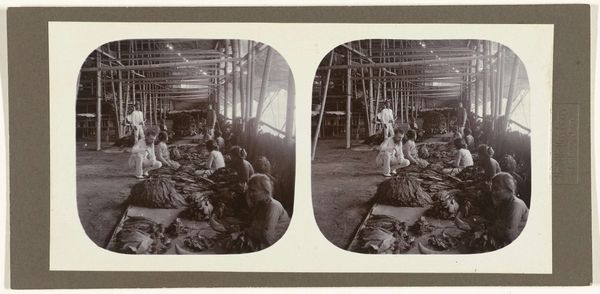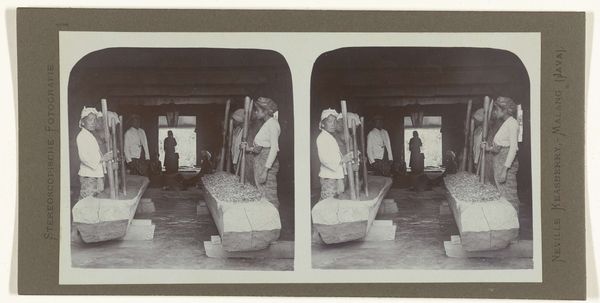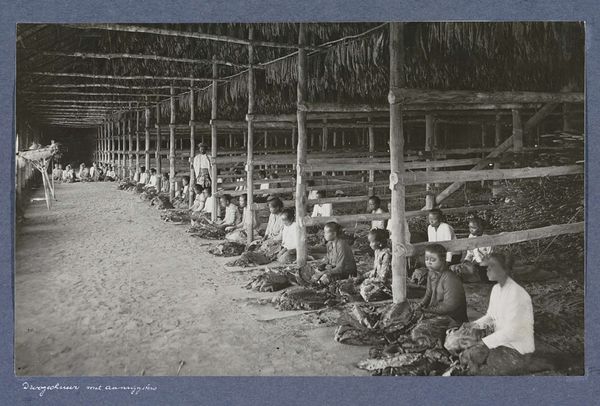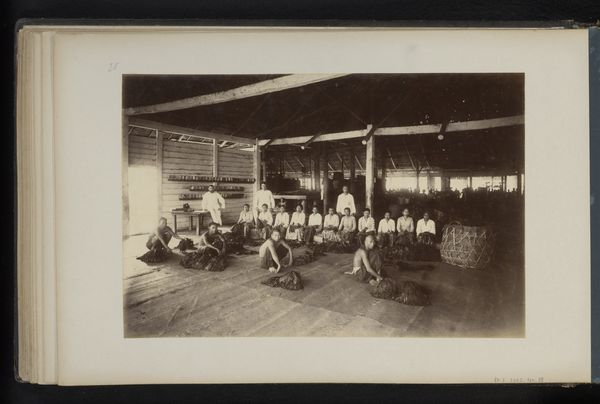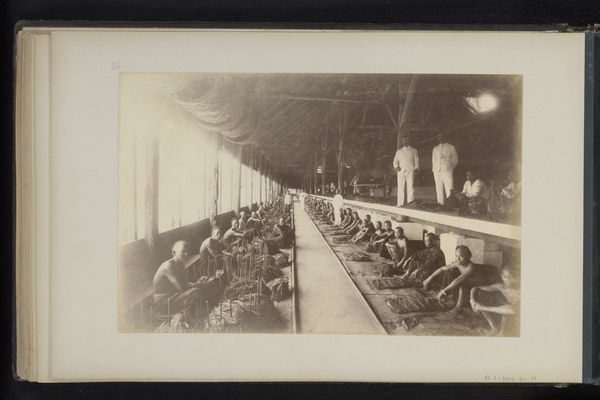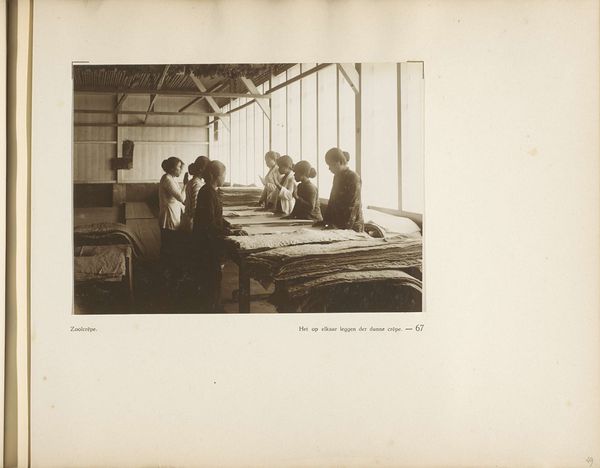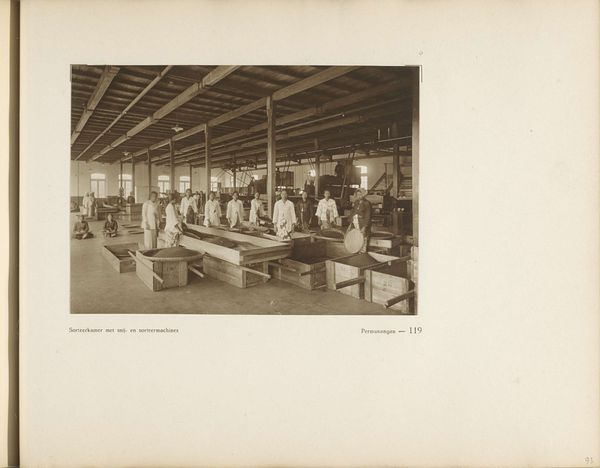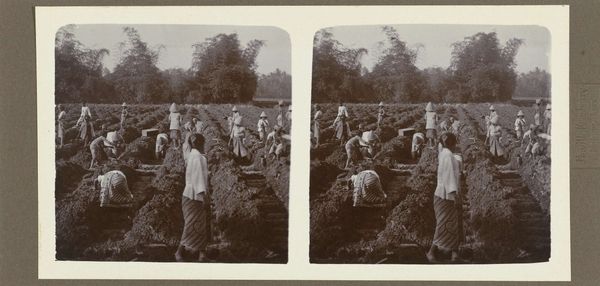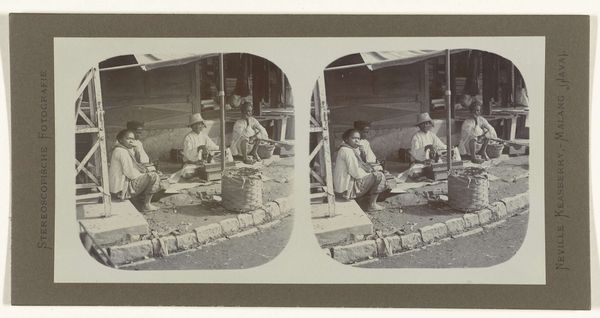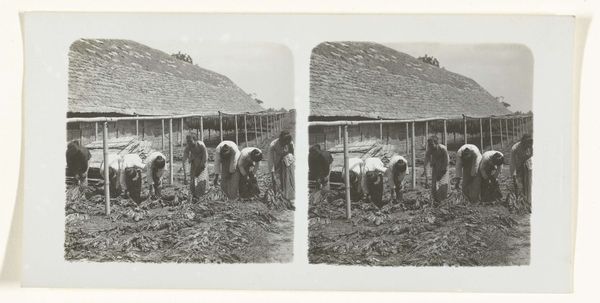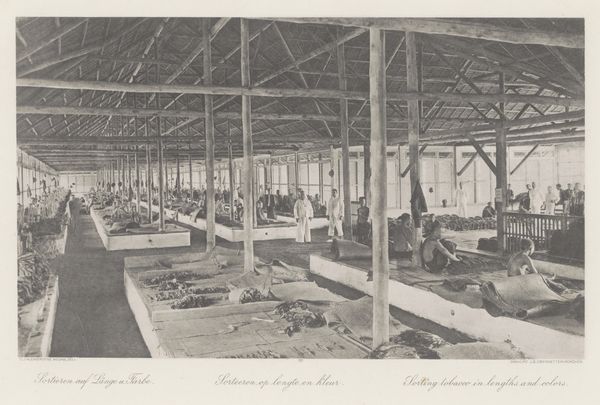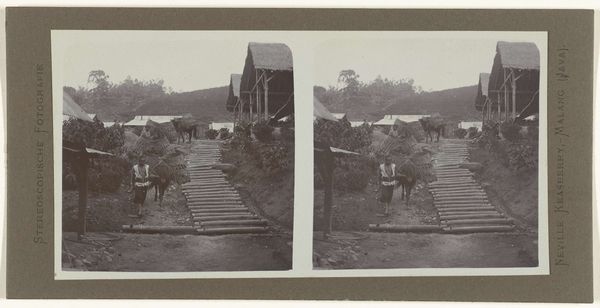
Verwerken van suikerrietstengels in een centrale hal door Javaanse werknemers. 1900 - 1935
0:00
0:00
albumen-print, photography, albumen-print
#
albumen-print
#
asian-art
#
photography
#
albumen-print
Dimensions: height 76 mm, width 152 mm
Copyright: Rijks Museum: Open Domain
Editor: Here we have Neville Keasberry's albumen print, "Verwerken van suikerrietstengels in een centrale hal door Javaanse werknemers" – depicting the processing of sugarcane by Javanese workers, sometime between 1900 and 1935. The repeating rhythm of the workers and the somewhat sterile architectural setting give me a sense of the industrial machine slowly grinding away. What do you see in this photograph? Curator: This image whispers stories of labor and landscape to me. The albumen print, itself a relic of photographic history, shows us the repetitive task of sugarcane processing. What I see isn’t just the workers themselves, arranged almost as components within this central hall – more than cogs, perhaps… but certainly contributing to something larger than themselves. Don’t you think that Keasberry is also inviting us to ponder the impact of this industry? Editor: That's an interesting take. I was so focused on the workers themselves, but now that you mention it, the sugarcane industry in Java definitely carries colonial undertones. Were these workers possibly indentured laborers, then? Curator: It is a plausible reading of Keasberry’s intent. It makes me reflect on the cultural and historical implications of mass production of sugarcane – Java's history is intertwined with it. And think about the technical precision needed for an albumen print of this scale back then. You might say the method becomes metaphorical - demanding labour to produce an image about labour! Editor: So, it becomes a document, but also a commentary… Fascinating! I never thought of it that way before. I definitely look at this piece from a totally different angle now. Thanks! Curator: It is art's playful trap to provoke you into discovering an answer and, ultimately, questioning if you believe it to be so. Thank *you*.
Comments
No comments
Be the first to comment and join the conversation on the ultimate creative platform.
